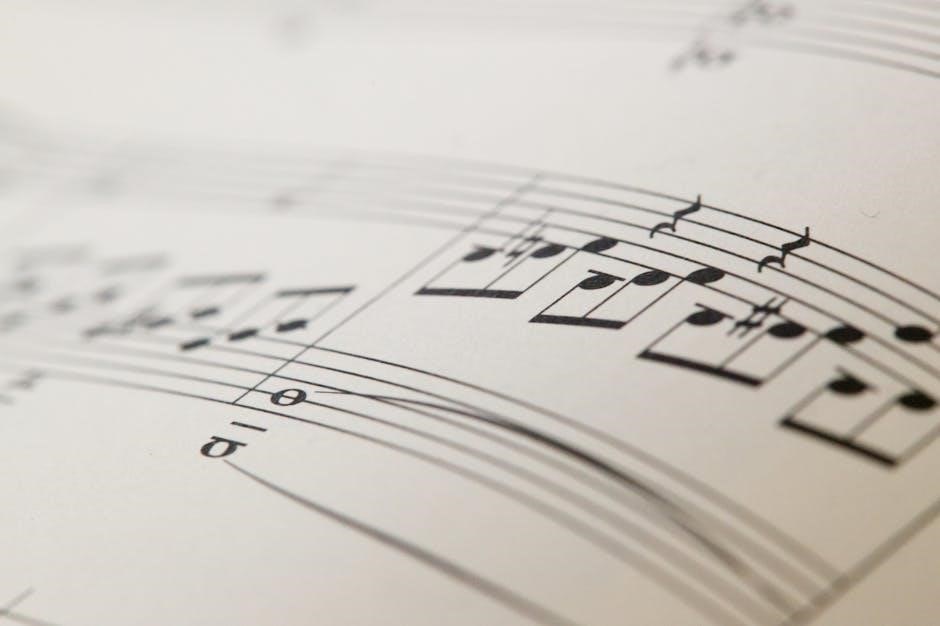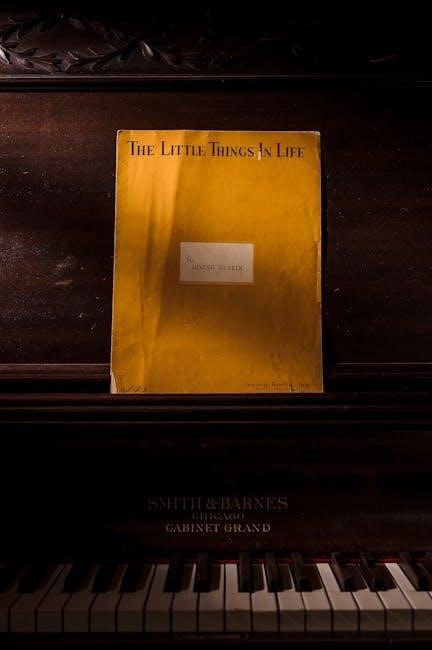Iron-rich foods are essential for maintaining healthy blood cells and preventing deficiencies. This article explores the importance of iron, its sources, and how to incorporate iron-rich foods into a balanced diet for optimal health benefits.
1.1 Importance of Iron in the Diet

Iron is a vital nutrient essential for numerous bodily functions, particularly the production of hemoglobin, which transports oxygen in the blood. It also plays a key role in energy metabolism, immune function, and cognitive performance. Iron deficiency can lead to anemia, causing fatigue, weakness, and impaired mental clarity. Adequate iron intake is crucial for maintaining healthy red blood cells and supporting overall health. The body cannot produce iron naturally, so it must be obtained through diet. Foods rich in iron, such as organ meats, leafy greens, and fortified cereals, are indispensable for preventing deficiencies. Ensuring sufficient iron consumption is especially important for high-risk groups, including children, pregnant women, and individuals with heavy menstrual periods. A balanced diet that includes a variety of iron-rich foods helps maintain optimal iron levels, promoting vitality and reducing the risk of health complications associated with deficiency.
1.2 Purpose of the Article
This article aims to provide a comprehensive guide to understanding and incorporating iron-rich foods into one’s diet. It seeks to educate readers on the importance of iron, its various sources, and how to optimize its absorption. The article is designed to help individuals identify iron-rich foods, understand the differences between heme and non-heme iron, and make informed dietary choices. By addressing both animal-based and plant-based sources, it caters to a diverse audience, including vegetarians and those with specific nutritional needs. Additionally, the article highlights factors that enhance or inhibit iron absorption, offering practical tips for maximizing nutritional benefits. It also includes a detailed table of iron-rich foods, making it a valuable resource for meal planning. The ultimate goal is to empower readers to maintain adequate iron levels, prevent deficiencies, and support overall health and well-being through a balanced and informed diet.

Food Sources of Iron
Iron-rich foods include animal-based sources like red meat, poultry, and fish, as well as plant-based options such as legumes, lentils, and spinach. Both heme and non-heme iron sources are essential for a balanced diet.
2.1 Animal-Based Foods Rich in Iron
Animal-based foods are among the richest sources of iron, particularly heme iron, which is more easily absorbed by the body. Red meat, such as beef and lamb, is an excellent source, with cuts like liver being exceptionally high in iron. Poultry, including chicken and turkey, also contributes significantly, especially when consumed with the skin. Fish, such as sardines and anchovies, are similarly rich in iron and offer additional health benefits like omega-3 fatty acids. Organ meats, such as duck or goose liver, are notably the highest in iron content, providing approximately 30 mg per 100 grams. Eggs, while not as high in iron as other meats, still offer a reliable source. These animal-based foods are not only rich in iron but also provide essential nutrients like protein and vitamins, making them a cornerstone of an iron-rich diet. Incorporating a variety of these foods ensures adequate iron intake and supports overall health. Moderation is key, however, due to their higher cholesterol and saturated fat content.
2.2 Plant-Based Foods Rich in Iron
Plant-based foods are a vital source of non-heme iron, which, while less absorbable than heme iron, can still contribute significantly to meeting dietary needs. Legumes, such as lentils, chickpeas, and black beans, are among the richest plant-based sources of iron. Nuts and seeds, particularly pumpkin seeds, sesame seeds, and sunflower seeds, are also high in iron. Leafy green vegetables like spinach, kale, and Swiss chard are excellent choices, with spinach being notably iron-dense. Whole grains, such as quinoa and enriched cereals, provide additional iron, while dried fruits like apricots and raisins are convenient snacks rich in this mineral. Tofu and tempeh, derived from soybeans, are also strong plant-based iron sources. Incorporating a variety of these foods ensures a balanced intake of iron from plant-based sources. Pairing them with vitamin C-rich foods can enhance absorption, making plant-based iron more effective in maintaining optimal health. A well-planned vegetarian diet can easily meet iron requirements, offering numerous health benefits and versatility in meal preparation.
Types of Iron in Foods
Iron exists in two forms: heme iron, found in animal products like meat and fish, and non-heme iron, present in plant-based foods such as spinach and beans. Heme iron is more easily absorbed by the body.

3.1 Heme Iron (Animal Sources)
Heme iron is found exclusively in animal-based foods and is the most bioavailable form of dietary iron. It is primarily located in hemoglobin and myoglobin, which are proteins in red blood cells and muscles. Foods rich in heme iron include organ meats like liver (notably duck or goose liver, containing up to 30 mg of iron per 100 grams), red meat, poultry, and fish. Eggs and shellfish, such as clams, are also excellent sources. Heme iron is more easily absorbed by the body compared to non-heme iron, making animal-derived foods particularly beneficial for individuals at risk of iron deficiency. This form of iron is crucial for maintaining healthy red blood cells and preventing anemia. Incorporating heme iron sources into the diet is especially important for vegetarians who may struggle to meet their iron needs through plant-based foods alone. Understanding the sources and benefits of heme iron can help individuals make informed dietary choices to ensure adequate iron intake.
3.2 Non-Heme Iron (Plant Sources)
Non-heme iron is the form of iron found in plant-based foods and is less bioavailable compared to heme iron. It is present in legumes, lentils, spinach, beans, tofu, and fortified cereals. Nuts, seeds, and dried fruits like raisins and apricots are also good sources. Dark leafy greens, such as kale and Swiss chard, are particularly rich in non-heme iron. Whole grains like quinoa and brown rice contribute to iron intake as well. Despite its lower absorption rate, non-heme iron is essential for a balanced diet, especially for vegetarians and vegans. Pairing these foods with vitamin C-rich ingredients, such as citrus fruits or tomatoes, enhances absorption. However, certain substances like tea, coffee, and calcium-rich foods can inhibit absorption. Incorporating a variety of plant-based iron sources ensures adequate intake and supports overall health. This section highlights the diversity of non-heme iron sources and their role in maintaining iron levels, especially in plant-based diets. Fortified foods are also a reliable option for meeting daily iron needs.

Factors Affecting Iron Absorption
Dietary factors significantly influence iron absorption. Enhancers like vitamin C boost absorption, while inhibitors such as tea, coffee, and calcium-rich foods hinder it. Understanding these factors is crucial for optimizing iron intake and preventing deficiencies.
4.1 Enhancers of Iron Absorption
Vitamin C is one of the most effective enhancers of iron absorption; It helps convert non-heme iron into a more soluble form, making it easier for the body to absorb. Foods rich in vitamin C, such as citrus fruits, tomatoes, and bell peppers, should be consumed alongside iron-rich meals to maximize absorption.
Organic acids, found in foods like sauerkraut and kimchi, also enhance iron absorption by creating an acidic environment in the stomach, which improves iron solubility. Additionally, certain amino acids in meat and poultry can promote iron uptake, particularly heme iron from animal sources.
Pairing iron-rich plant-based foods with vitamin C-rich foods or acidic ingredients is a practical strategy to boost absorption. For example, adding lemon juice to spinach or combining beans with tomatoes can significantly enhance iron uptake. These simple dietary adjustments can help prevent deficiencies and ensure optimal iron levels.

4.2 Inhibitors of Iron Absorption
Certain foods and substances can significantly inhibit iron absorption, reducing its effectiveness in the body. Phytates, found in whole grains, legumes, and nuts, are among the most common inhibitors. They bind to iron, forming insoluble compounds that the body cannot absorb. Similarly, oxalates in foods like spinach, beets, and rhubarb can also hinder iron uptake by forming similar complexes.
Calcium, particularly from dairy products, can interfere with non-heme iron absorption when consumed in large amounts. Additionally, polyphenols, such as tannins in tea, coffee, and certain fruits, can also reduce iron absorption by binding to it in the digestive tract. Consuming these foods or beverages during or immediately after iron-rich meals can significantly lower absorption rates.
To minimize these effects, it is recommended to avoid consuming inhibitor-rich foods during iron-rich meals. For example, drinking tea or coffee should be spaced at least 30 minutes to 1 hour before or after eating iron-rich foods. Balancing the diet and timing meals appropriately can help optimize iron absorption and overall nutritional benefits.

Dietary Recommendations for Iron Intake
A balanced diet rich in iron can be achieved by consuming a variety of foods, including red meat, poultry, fish, spinach, lentils, and fortified cereals. Pairing plant-based iron sources with vitamin C enhances absorption, ensuring optimal iron intake for overall health and well-being.

5.1 General Guidelines for Iron Consumption
Consuming iron-rich foods is vital for maintaining healthy red blood cells and preventing deficiency. The recommended daily intake varies by age and health status, with adults typically needing about 8-18 mg per day. Pregnant women require significantly more, up to 27 mg daily, due to increased blood volume and fetal development needs. Children also need adequate iron for growth and brain development, especially during infancy and adolescence when rapid growth occurs. A balanced diet that includes both heme and non-heme iron sources is ideal. Heme iron, found in animal products like red meat, poultry, and fish, is more easily absorbed by the body. Non-heme iron from plant-based foods such as spinach, lentils, and fortified cereals can be enhanced by pairing with vitamin C-rich foods like citrus fruits or tomatoes. Avoid consuming iron inhibitors like tea, coffee, and calcium supplements close to iron-rich meals to maximize absorption. Regularly monitoring iron levels and consulting a healthcare provider can help ensure optimal intake and prevent deficiency or overload.
5.2 Iron-Rich Diets for Vegetarians
Vegetarians can easily meet their iron needs by incorporating a variety of plant-based iron sources into their diets. Lentils, chickpeas, black beans, and spinach are among the richest in iron, along with tofu, tempeh, and edamame. Fortified cereals and dark leafy greens like kale and Swiss chard also contribute significantly. Pairing these foods with vitamin C-rich fruits or vegetables, such as tomatoes, bell peppers, or citrus, enhances iron absorption. Avoid consuming iron inhibitors like tea, coffee, or calcium supplements close to meals. Incorporating a wide variety of whole grains, nuts, and seeds, such as pumpkin seeds and sesame seeds, further boosts iron intake. A well-planned vegetarian diet can provide all the necessary iron for optimal health, making it possible to thrive without animal-derived sources. Regularly consulting an iron-rich foods table can help vegetarians make informed choices and ensure they meet their dietary needs effectively.
5.3 Iron Needs for Children and Pregnant Women
Children and pregnant women have higher iron requirements due to rapid growth and development. For children, the recommended daily intake ranges from 7 to 10 mg, increasing with age. Pregnant women need approximately 27 mg of iron per day to support the baby’s growth and their own health. Iron deficiency in these groups can lead to anemia, fatigue, and developmental delays in children, while in pregnancy, it may increase the risk of preterm delivery and low birth weight. To meet these needs, it is essential to consume a diet rich in iron from sources like red meat, poultry, fish, and fortified cereals. Plant-based options, such as lentils, spinach, and beans, are also effective when paired with vitamin C-rich foods to enhance absorption. Avoiding iron inhibitors like tea and coffee during meals can further improve uptake. Ensuring adequate iron intake through a balanced diet or supplements, if necessary, is critical for the health and well-being of both children and pregnant women.

Tableau des Aliments Riches en Fer (Iron-Rich Foods Table)
This section provides a detailed table listing aliments riches en fer, including animal-based and plant-based sources. It highlights foods like duck liver (30 mg per 100g) and lentils (6.6 mg per 100g), offering a clear guide for planning iron-rich diets.
6.1 Structure of the Table

The table is organized into columns for clarity: food name, iron content per 100g, and food category. Each row lists a specific food item, such as duck liver (30 mg) or lentils (6.6 mg). Additional columns may include serving size and absorption tips. The table uses bold headers for readability and alternating row colors for easy scanning. It serves as a quick reference guide for planning balanced iron-rich diets. Keywords like “aliments riches en fer” are included for relevance. This structured format ensures users can efficiently identify and compare iron-rich foods, aiding in meal planning and nutrient tracking. The table is designed to be user-friendly, with clear headings and concise data presentation. It is a valuable resource for anyone seeking to incorporate more iron into their diet. The layout is clean, with no unnecessary complexity, making it accessible for all users. This section focuses solely on the table’s structure, avoiding discussion of its content or application, which are covered elsewhere.
6.2 Design and Formatting Tips
When creating a PDF table of iron-rich foods, prioritize clarity and readability. Use bold headers for columns like “Food Name,” “Iron Content (mg/100g),” and “Food Category” to enhance visibility. Alternate row colors to make scanning easier. Ensure the table is properly aligned and fits within standard page margins. Use a clean font like Arial or Helvetica in size 10-12 points. Avoid overcrowding by using line spacing and padding between rows. Highlight high-iron foods like duck liver (30 mg) or lentils (6.6 mg) with shading or bold text. Include a legend or footnote to explain abbreviations. Ensure the table is scalable for digital viewing without losing clarity. Use page breaks strategically to prevent data fragmentation. Consider adding a border around the table for a polished look. Keep the design consistent throughout the document. These formatting tips ensure the table is both functional and visually appealing, making it easier for users to reference and apply the information in their diets. A well-designed table enhances the user experience and comprehension of iron-rich food data.
Incorporating iron-rich foods into your diet is crucial for health. From animal sources like duck liver to plant-based options like lentils, a varied intake ensures optimal iron levels. Referencing a well-structured PDF table helps in making informed dietary choices effectively.
7.1 Final Thoughts on Iron-Rich Diets
Adopting an iron-rich diet is vital for overall health, preventing deficiencies, and boosting energy levels. By understanding the best food sources, such as duck liver, lentils, and spinach, individuals can create balanced meals. Pairing iron-rich foods with vitamin C enhances absorption, while avoiding inhibitors like tea and coffee during meals ensures maximum benefit. A well-organized PDF table provides a quick reference guide, helping to plan and track daily iron intake effectively. Whether you’re a vegetarian or an athlete, meeting iron needs is achievable with mindful dietary choices. Prioritizing variety and awareness can lead to long-term health and well-being. Making informed decisions about iron intake is a simple yet impactful step toward a healthier lifestyle.






























